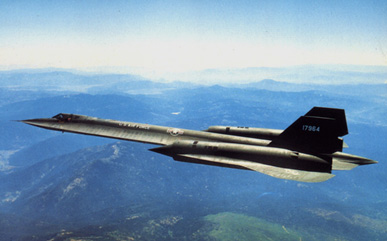

 เลือกภาษาไทย
เลือกภาษาไทย 
 | ||
 |
Thai  เลือกภาษาไทย เลือกภาษาไทย | |
 | ||
 SR-71 Blackbird | ||
| The Lockheed SR 71-A Blackbird is an American made two-seat , long-range, advanced, strategic reconnaissance aircraft developed
from the Lockheed A-12 and YF-12A aircraft reconnaissance aircraft. SR-71 Blackbird entered the U.S. Air Force's inventory in 1966 as the fastest aircraft in the world and still holds that distinction to this day. The SR-71 Blackbird, originally named the RS-71, the aircraft was announced by Lyndon B. Johnson on February 29. 1964, Johnson accidentally switched the letters for the name of the aircraft, which made Lockheed to change the name of the aircraft. The project began in February 1963 and Its first flight was on Dec. 22, 1964. and the first SR-71 to enter service was delivered in January 1966.The SR-71/RS-71 is the successor to the U-2 in every way. The SR-71 has speed of Mach 3.5 (more than 3.5 times the speed of sound), and fly from New York to Las Angles in less than an hour, can fly higher than 100,000 feet, and has a range of 4,000 miles. The U.S. Air Force retired its fleet of SR-71s on January 26, 1990, because of a decreasing defense budget and high costs of operation. The USAF returned the SR-71 to the active Air Force inventory in 1995 and began flying operational missions in January 1997. The planes were permanently retired in 1998. Thirty-two planes were built. Of these, 12 were lost in flight accidents but all crews ejected safely. The airframes are built almost entirely of titanium and titanium alloys to withstand heat generated by high speed flight and then painted the aircraft black to dissipate heat. Due to the great temperature changes occurring during flight, the fuselage panels were essentially loose. Proper alignment was only achieved when the airframe warmed up due to the air resistance at high speeds and expanded several inches. Because of this, and the lack of a fuel sealing system that could handle the extreme temperatures that the SR-71 flew at, the aircraft would actually leak its specially formulated JP-7 jet fuel onto the runway before it took off. The aircraft would quickly make a short sprint, meant to warm up the airframe, and was then air-to-air refueled before departing on its mission. control surfaces consist of all-moving vertical tail surfaces above each engine nacelle, ailerons on the outer wings and elevators on the trailing edges between the engine exhaust nozzles. Two SR-71 aircraft were used by NASA as testbeds for high-speed, high-altitude aeronautical research. The aircraft, an SR-71A and an SR-71B pilot trainer, at that time , aircraft were based at NASA's Dryden Flight Research Center, Edwards, Calif. They have been loaned to NASA by the U.S. Air Force. |